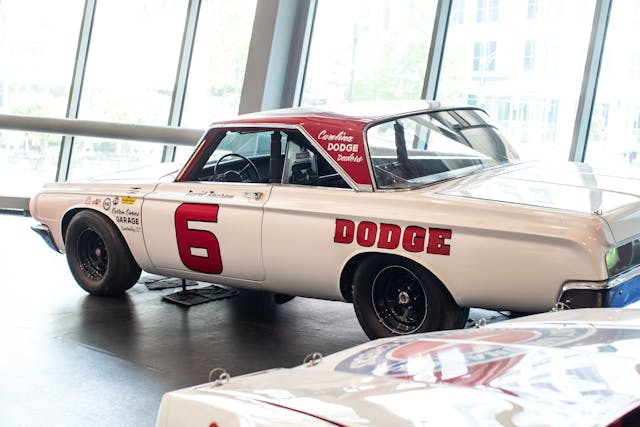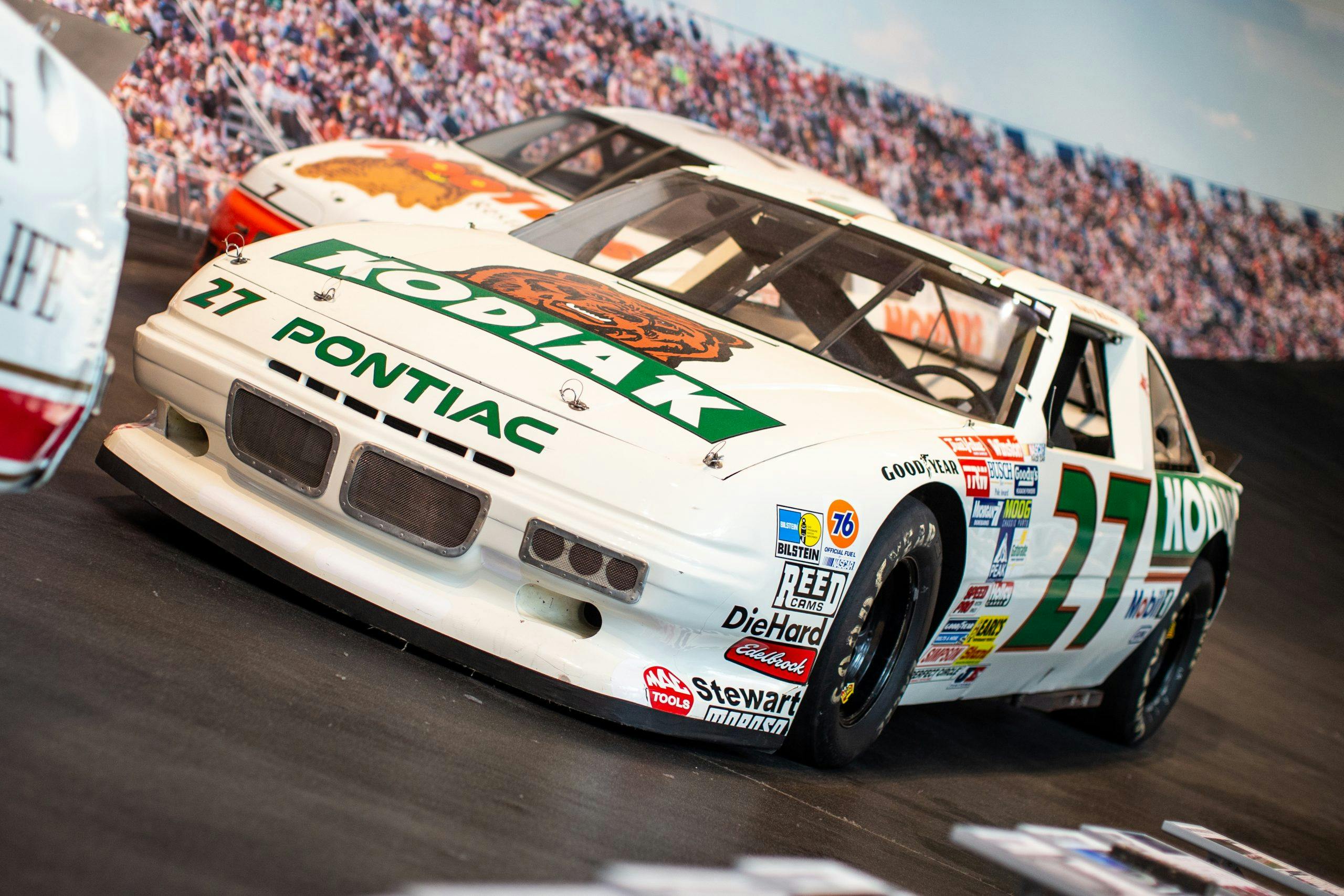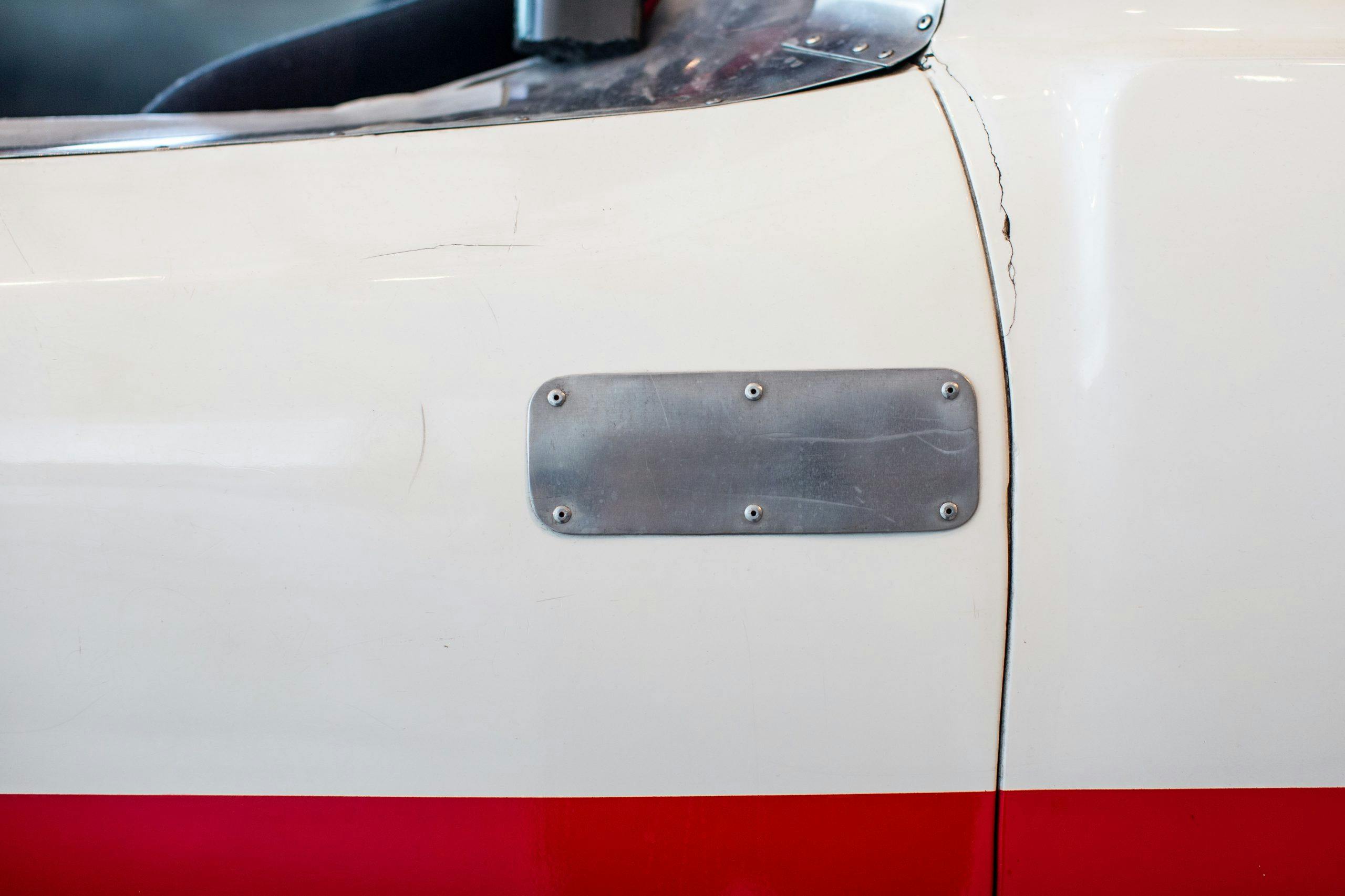Media | Articles
9 star stockers from the NASCAR Hall of Fame’s “Glory Road” exhibit
Since the NASCAR Hall of Fame opened its doors in 2010, its Glory Road exhibit—a spiraling embankment featuring the most prolific cars from the sanctioning body’s 74-year history—has been a staple of the museum’s esteemed collection. Visible from MLK Jr. Boulevard in downtown Charlotte, North Carolina, the static stockers welcome fans as they enter the four-story Hall of Fame building. Every so often, the racers are shuffled or swapped based on curator discretion. In 2020, the Hall of Fame tapped newly-inducted Dale Earnhardt Jr (HoF class of 2021) to hand-pick the roster of cars for the fourth—and most recent—iteration of the exhibit.
Dubbed “Dale Jr. Glory Road Champions,” the lineup showcases 18 stock cars driven by NASCAR Cup Series champions. During a recent visit to the Hall of Fame, we selected nine of our favorites.
Buck Baker’s 1957 Chevrolet 150
Following the tragic crash that claimed 82 lives at the 1955 24 Hours of Le Mans, the Big Three withdrew from auto racing, in an official capacity, at least. General Motors, for example, hired former Hudson race engineer Vince Piggins to build race cars in the back bays of an Atlanta Chevrolet dealership under the Southern Engineering and Development Company (SEDCO) banner. The group built its first Black Widow for NASCAR competition, which featured a fuel-injected 283-cubic-inch V-8, a three-speed manual, six-lug wheels, and a 20-gallon gas tank.
According to the Hall of Fame, Piggins then distributed a manual titled The 1957 Chevrolet Stock Car Competition Guide to more than 400 dealerships, detailing how a Chevrolet One-Fifty could be converted into a race-winning stock car, including a list of the necessary 170 GM components for conversion. Of the converted 1957 Chevrolet racers, the Black Widow driven by Buck Baker was the most successful, winning 10 races during the ’57 season and eventually the championship.
David Pearson’s 1964 Dodge Polara
Before David Pearson immortalized his NASCAR exploits aboard Holman-Moody Fords and Wood Brothers Mercurys, the three-time champion earned his first title racing in a Dodge. Owned by Cotton Owens, this 1964 Polara would have been the precursor to the Dodge Charger that dominated NASCAR during the late 1960s. Ahead of the 1966 season, Ford withdrew from NASCAR competition. With no Blue Oval-backed powerhouses to be found, and NASCAR’s recent decree that Dodge teams could harness Hemi power, the Chrysler group ran rampant. Pearson picked up eight victories during the 1964 season and eventually his first title in 1966, aboard a Charger. (Fun fact: 1966 was also the first year, a NASCAR team utilized a spoiler.)
Marketplace
Buy and sell classics with confidence
Benny Parson’s 1973 Chevrolet Chevelle
Former Detroit taxi driver Benny Parsons only won one race during the 1973 NASCAR Cup Series season. Parsons was a model of consistency, though, accumulating enough points throughout the 28-race slate to best perennial contenders Cale Yarborough and Richard Petty. The newly-minted third-gen Chevelle—which featured a sleek semi-fastback design—propelled Parsons to victory and earned Chevrolet its second consecutive manufacturers’ title. Restored by one of the team’s original crew members Tex Powell, the Chevelle features a 427 under the long hood, which appears as though it was heavily massaged in period for improved aero. (Unsubstantiated, of course.)
Darrell Waltrip’s 1981 Buick Regal
For the 1981 season, NASCAR debuted its third generation of stock car, which featured smaller cars to match the downsizing trend in North American showrooms. Wheelbase was reduced from 115 inches to the 110. Dodge Miradas, Ford Thunderbirds, Chevrolet Monte Carlos, Pontiac Grand Prix, and Buick Regals were the chariots of choice, and the latter eventually won the NASCAR Cup Series championship with Darrell Waltrip at the wheel (his first of three). Waltrip, along with team owner—and fellow Hall of Famer—Junior Johnson, wiped the field with their Mountain Dew-sponsored Regal on a weekly basis, earning 12 wins along the way.
Rusty Wallace’s 1989 Pontiac Grand Prix
The 1989 NASCAR Cup Series season was largely marked by a changing of the guard. According to the Hall of Fame, 1989 was the first season without David Pearson, Bobby Allison, Cale Yarborough, Benny Parsons, and Buddy Baker competing full-time at NASCAR’s highest level. In their place, a new crop of stars emerged including Dale Earnhardt, Mark Martin, and Rusty Wallace.
Despite his success well into the early-00s, Missouri’s Rusty Wallace, won his only championship in 1989 driving this Pontiac Grand Prix for Blue Max Racing, edging Earnhardt by a meager 12 points. The herculean feat of besting the Intimidator is even more impressive, knowing that Wallace and team owner Raymond Beadle sued one another over contract disputes during the championship run. The title also marks Pontiac’s first cup in NASCAR’s modern era. One year later, the team disbanded and Rusty began his tenure with “The Captain” Roger Penske.
Alan Kulwicki’s 1992 Ford “Underbird”
At the NASCAR awards banquet in 1992, Alan Kulwicki was honored by a tribute video set to Frank Sinatra’s “My Way,” because the Wisconsin-born champion operated in the Cup Series with a certain swagger. Unlike many of his peers, “Special K” was from the Midwest and came to NASCAR with a college degree. Twice, while on the rise to stardom, Kulwicki even turned down offers from Junior Johnson instead opting to drive for his own team, AK Racing—an underdog squad of only 14 full-time employees.
Kulwicki embraced his team’s status as David among Goliaths, adorning a Mighty Mouse patch to his uniform and removing the ‘TH” from his Ford’s grille stickers so that it read “UNDERBIRD.” Small and tough, the team claimed victory several times—a feat underlined by Kulwicki’s famed opposite direction celebration, dubbed the “Polish Victory Lap.” This tenth-generation Thunderbird, featuring a 358-cubic-inch small-block, helped Kulwicki earn his greatest triumph: the 1992 Cup Series Championship.
Dale Earnhardt’s 1994 Chevrolet Lumina
Any NASCAR exhibit wouldn’t be complete without a Dale Earnhardt car, especially one trimmed in the classic black Goodwrench scheme immortalized by “The Intimidator”. Driving this Chevrolet Lumina, The Man In Black captured his seventh Cup Series championship, tying him with fellow Hall of Famer Richard Petty for the most season titles in the series. Earnhardt dominated the ’94 season, racking up four wins and clinching the title two full races before season’s end. The triumph was also the Lumina’s last hoorah, as Chevrolet switched back to the Monte Carlo for the 1995 season.
Jeff Gordon’s 1997 Monte Carlo
Wonder boy Jeff Gordon and fellow Hall of Fame crew chief Ray Evernham shocked the world in 1995 and earned their first Cup Series championship in a blaze of Dupont Day-Glo. Just two years later, the duo put together another championship season, beating future champion Dale Jarrett by only 14 points.
The car on display at the Hall of Fame is Gordon’s 1997 Daytona 500-winning Monte Carlo. Ahead of the 500, it was learned that team owner Rick Hendrick would not attend NASCAR the Great American Race, due to an ongoing g battle with leukemia. Driving with a little extra inspiration, his team swept the podium and Gordon earned his first of three Daytona 500 victories. Unlike the Lumina used in NASCAR competition just three years earlier, the Monte looks rather aerodynamic. It’s easy to imagine margin operator Evernham poring over the car, instructing body workers to meticulously massage every inch. Even the driver’s window resembles a narrow slit by today’s standard dimensions.
Jimmie Johnson’s 2016 Chevrolet SS
After Jeff Gordon rattled off four championships from 1995–2001, many thought the Rainbow Warrior would be the next driver to tie Richard Petty and Dale Earnhardt with seven championships. As Gordon’s momentum slowed in the 2000s, teammate Jimmie Johnson was spooling up a record run of his own. From 2006 to 2010, Johnson won an unprecedented five straight titles and became the clear favorite to eventually hit lucky number seven. After capturing a sixth in 2013, it simply became a matter of time.
The 2016 season was far from Johnson’s most dominant. Driving a Chevrolet SS—a race version of the Australian super sedan—the Hendrick driver made use of NASCAR’s winner-take-all finale format and won the final event at Homestead, ultimately winning his final, and record-tying seventh, championship.





















































